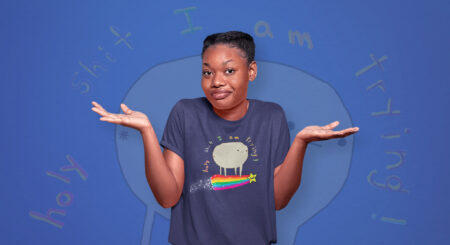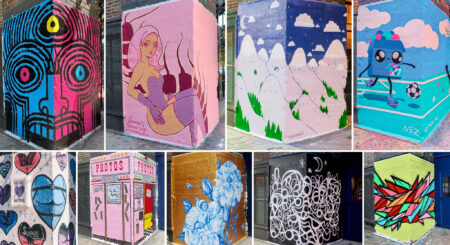We grow up learning that math, computer science, and art, are all separate things. But creativity knows no bounds; it’s needed when it comes to thinking outside of the box for any subject. And when it comes to designing for User Experience (UX), the analytical left brain and the creative right brain come together.
After Threadless hosted General Assembly’s “Inside the Mind of Brilliant Designers” panel, I realized there was a lot more creativity to UX design than I thought. To find out more, I talked to our very own Director of User Experience here at Threadless, Billy, who told me all about what a UX designer does, some of his favorite design examples, and how creativity can thrive in even the most analytical of places. Check it out!
. . .
How did you first get started in the design field?

When I was growing up, I was always drawing, painting, and doing creative projects. As I got closer to graduating high school, my art teacher recommended I check out graphic design as a career. She invited a graphic designer friend to come and talk to me about what she does. I can’t say I was hooked immediately, but she piqued my interest for sure. Computers were new to me (ha, I’m old), and it sounded like a challenge.
When I got to college I did not love design at first; it took awhile for me to see the creativity in it. Then it really hit me and I became obsessed. I had various terrible design jobs (example: designing a 1,200 page tool catalog…), but I knew it was what I wanted to do for the rest of my life.

What’s your day-to-day like?
A designer’s job is to solve problems, or to design solutions. A product designer’s job (on the digital side) is to frequently assess the product and look for ways to improve the experience for the user. My day-to-day work varies based on where we are in a project cycle. Some days I am conducting user interviews to gather feedback. Other days, I am designing and prototyping updates to a feature.

What’s one of your favorite examples of great design?
There are so many haha One of the first examples of graphic design that really caught my eye were the pictograms Otl Aicher made for the Munich Games in 1972. It was a masterfully executed design system of icons and I loved how smart it was.

The designs for the 1968 Mexico olympics were great as well. David Carson created a whole new style of visual communication; it is design as fine art. Paula Scher’s work for the New York City’s Public Theater is one of my top favorites. I will be forever inspired by Josef Mueller-Brockmann’s book, Grid Systems, and his posters are 👌…I have a long list of designers I love that I can share.
In terms of art, it’s creative in every sense of the arts. We use words, pictures, sounds, motion and more to convey meaning to our users…Successful design projects are deceptively complex, appearing simple only on the surface. It takes creativity to hide the complexity.
Is design more of a science or more of an art? How does being a designer allow you to get creative?
It fits perfectly in the middle of the two. In UX/Product Design, a lot of what we do can be quantified. We create designs, review analytics of our users’ behavior, we form hypotheses, we make changes to the design and the cycle continues. We call it an ‘iterative process’. We are always looking for ways to improve our product. Scientists use similar methods to come to conclusions in their work. In terms of art, it’s creative in every sense of the arts. We use words, pictures, sounds, motion and more to convey meaning to our users. Being a designer is a creative job, but also demands an analytical mind. Successful design projects are deceptively complex, appearing simple only on the surface. It takes creativity to hide the complexity.

What do a lot of people not know about being a designer?
You have to wear many hats. You need to design in the sense of planning. Creating systems is a skill that applies to all facets of the field of design. Think of a “system” as a specific set of rules for anything visual. Logos have a system, websites, mobile applications, branding campaigns, and so on. It’s the best way to effectively communicate with a wide array of users.

It seems like the designer position can vary a lot from startups to large companies – how do these differ and where can you get most creative?
Each job can be similar, and it all depends on some factors. If you work for an organization that values design, you will get more opportunities to explore. Or, if you work for a manager who trusts you, they will allow you a lot of creative freedom. On the other hand, if you work for someone who doesn’t value what you do or you do not have their trust, you will find it hard to find the space needed to explore the ideas you have.

How do you get inspired?
For real, I am always on the lookout for inspiration. It’s a never-ending struggle to feed my mind with interesting and new things that keep my brain on its toes, as they say. I am a naturally curious person who loves to research things. I hear about something, I will try to learn about it. It can be anything. Naturally curious people are lifelong learners and make for great designers, or really any creative type job.
Featured image is via General Assembly Chicago’s featured image for the “Inside the Mind of Brilliant Designers” panel at Threadless!




